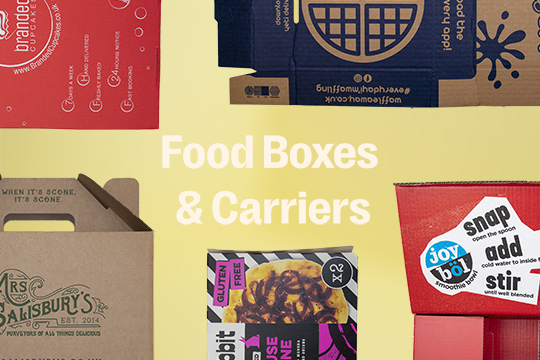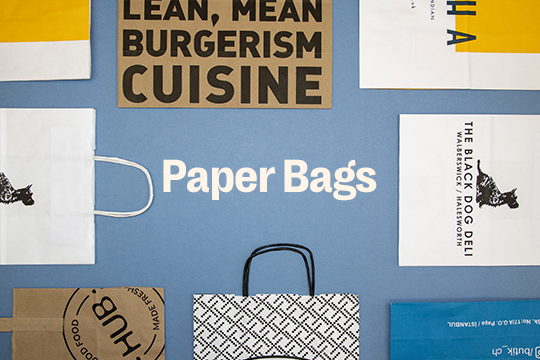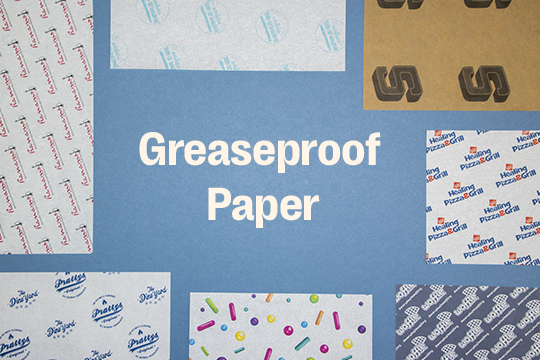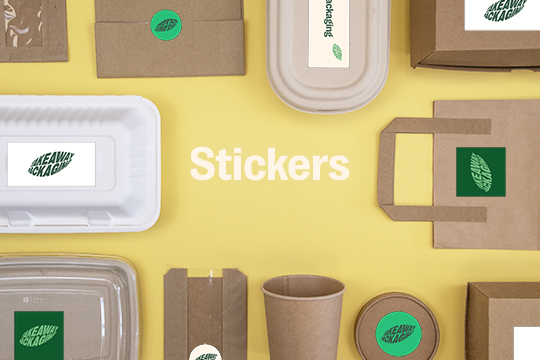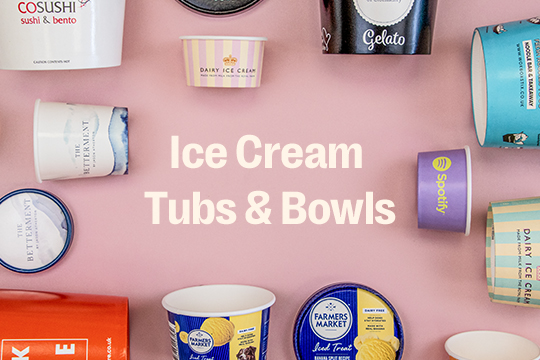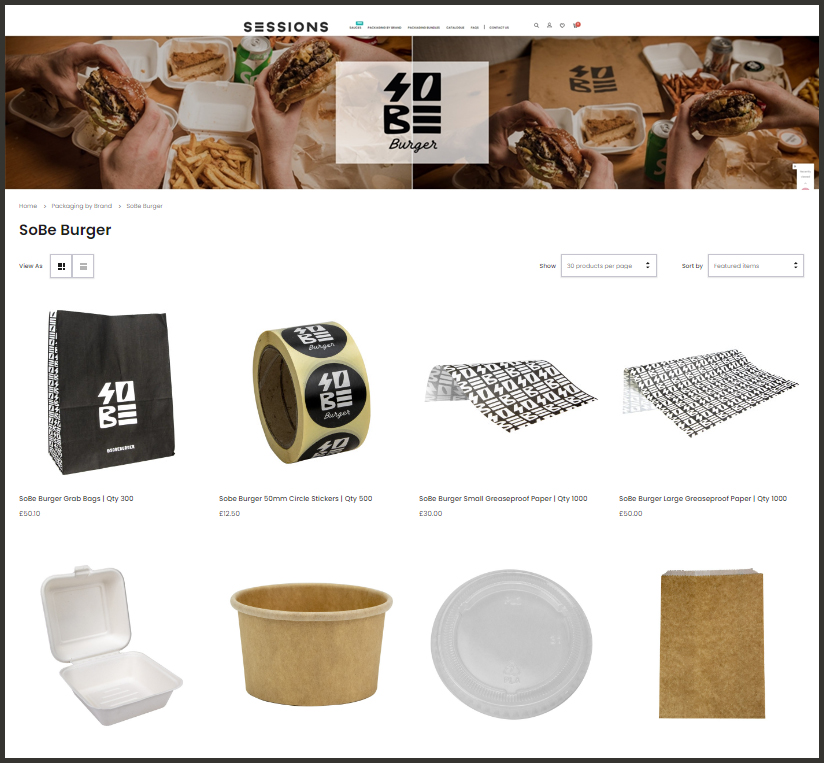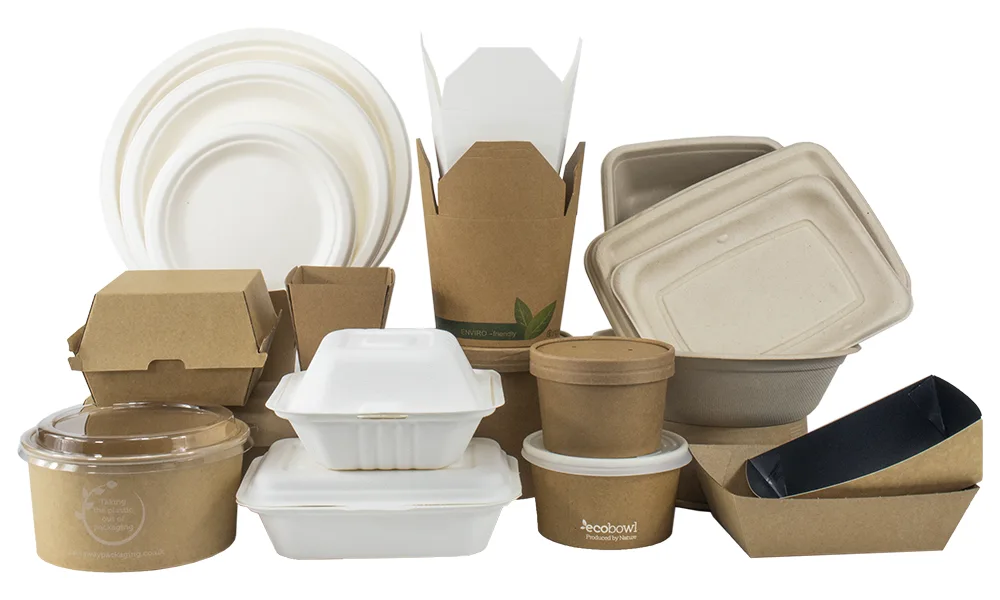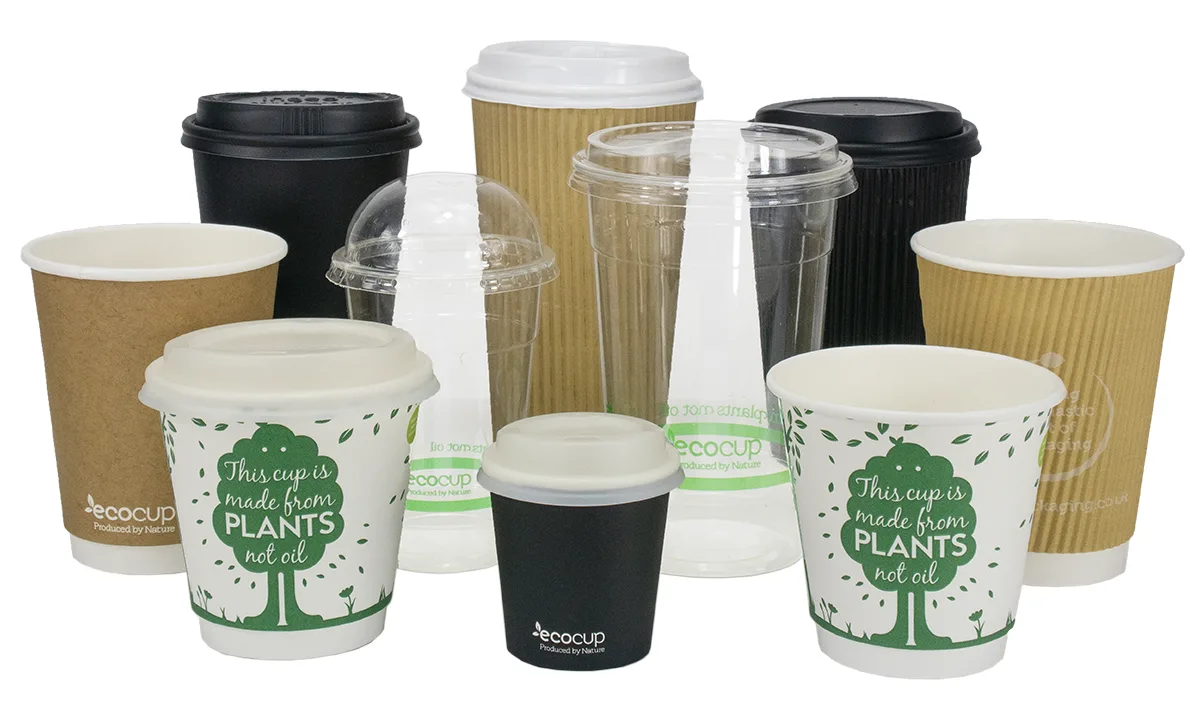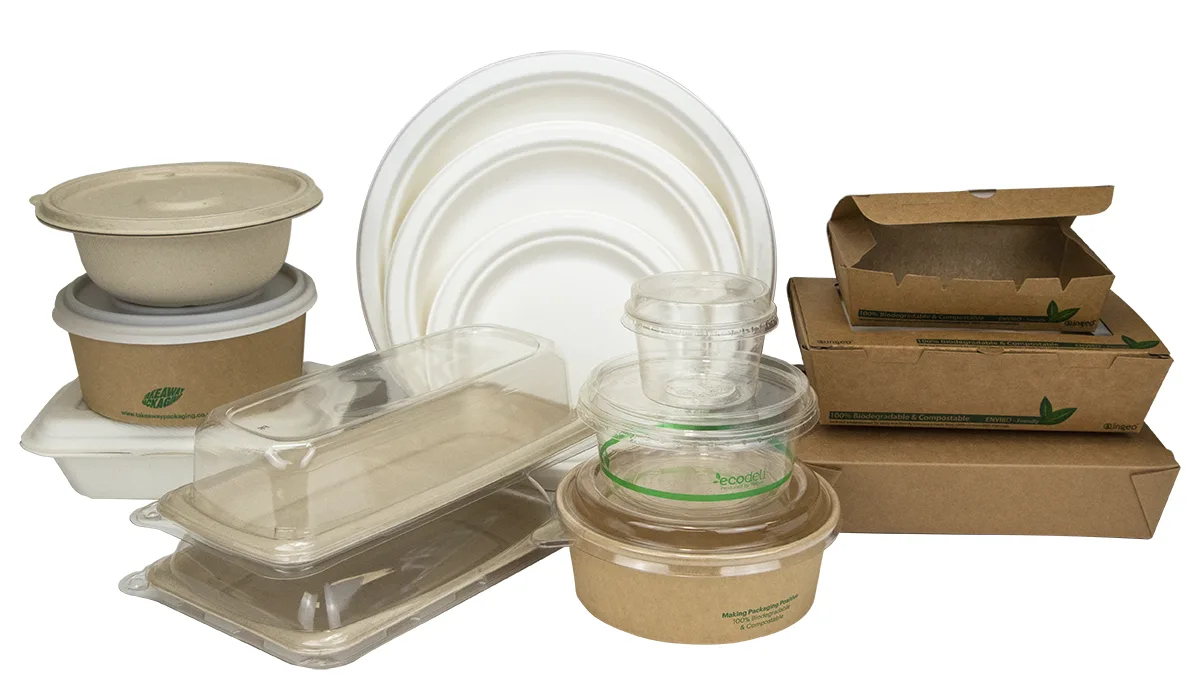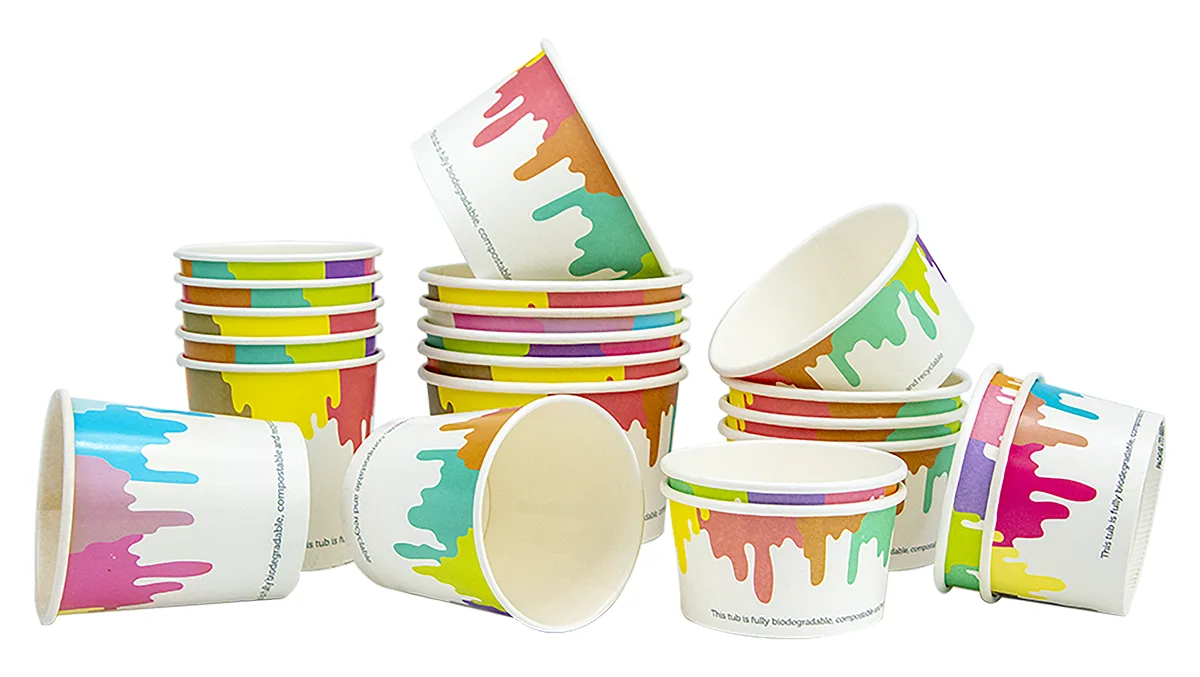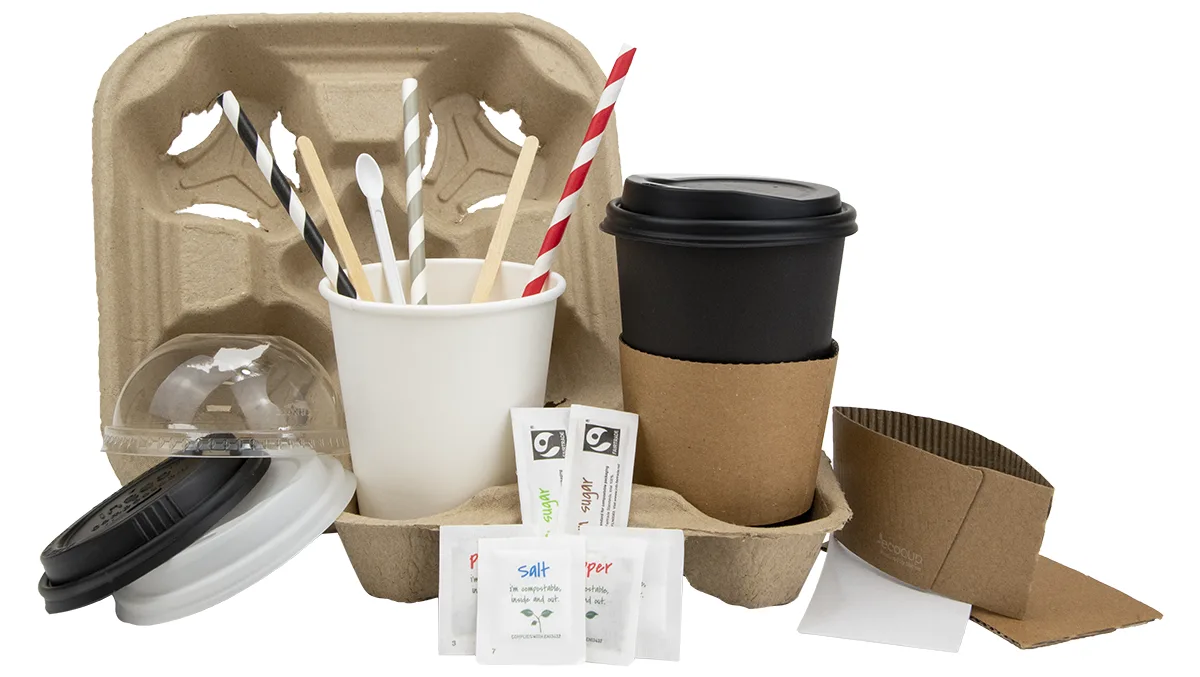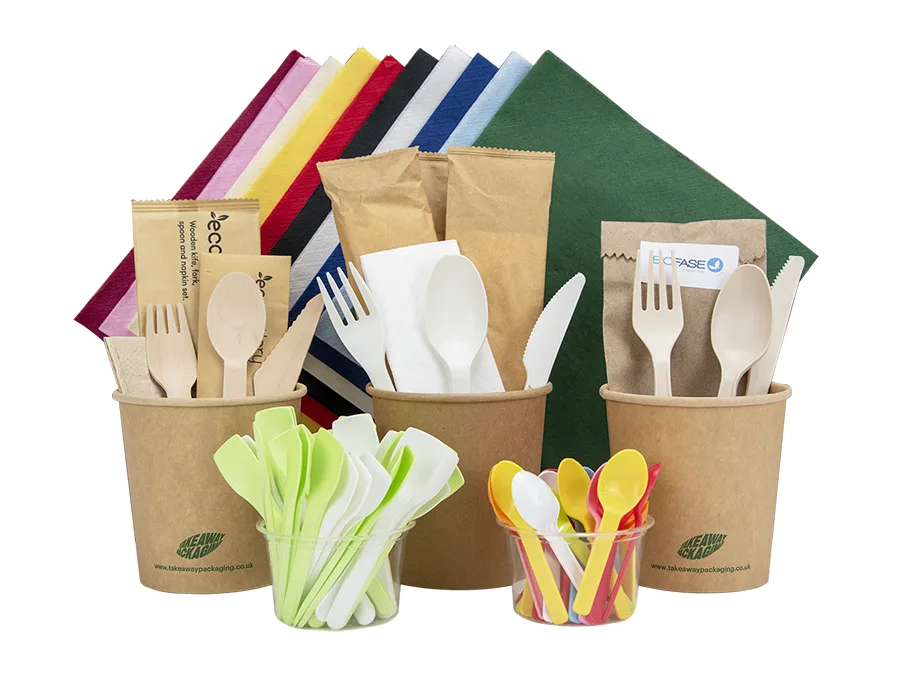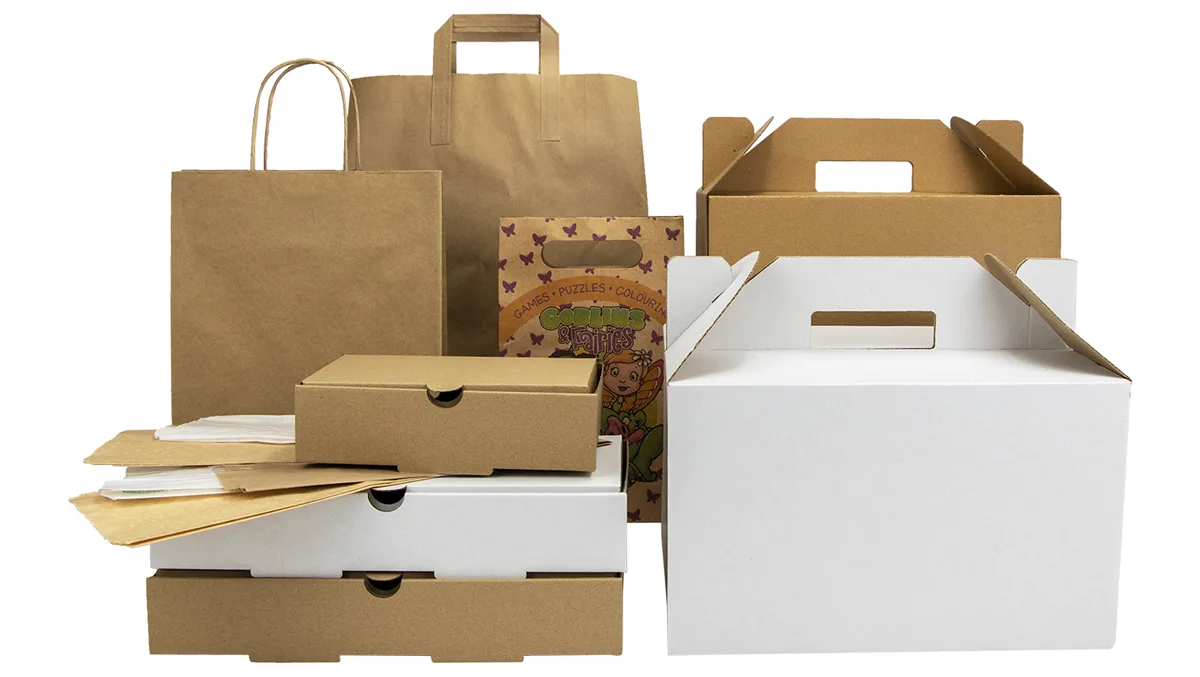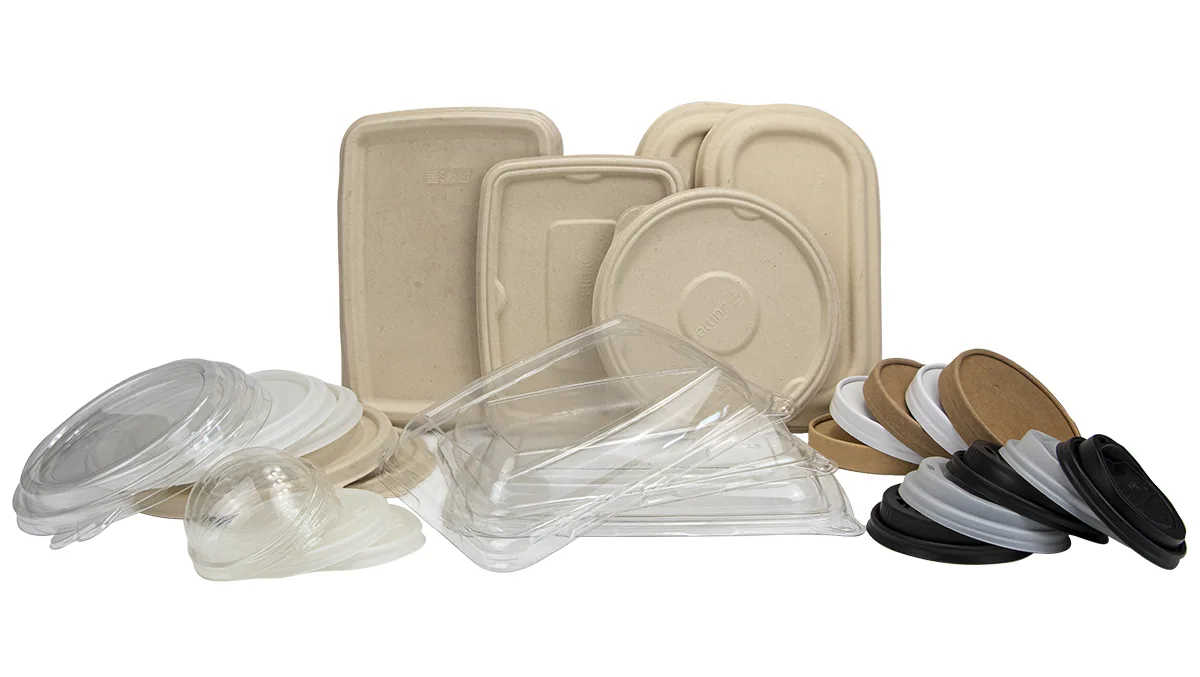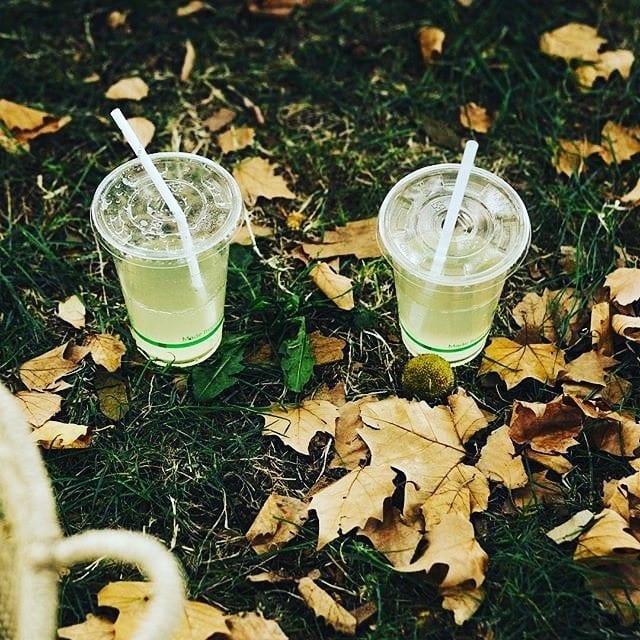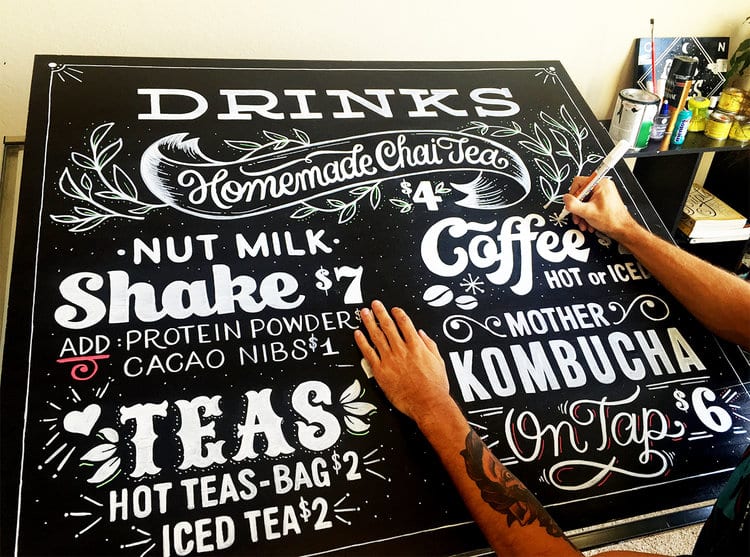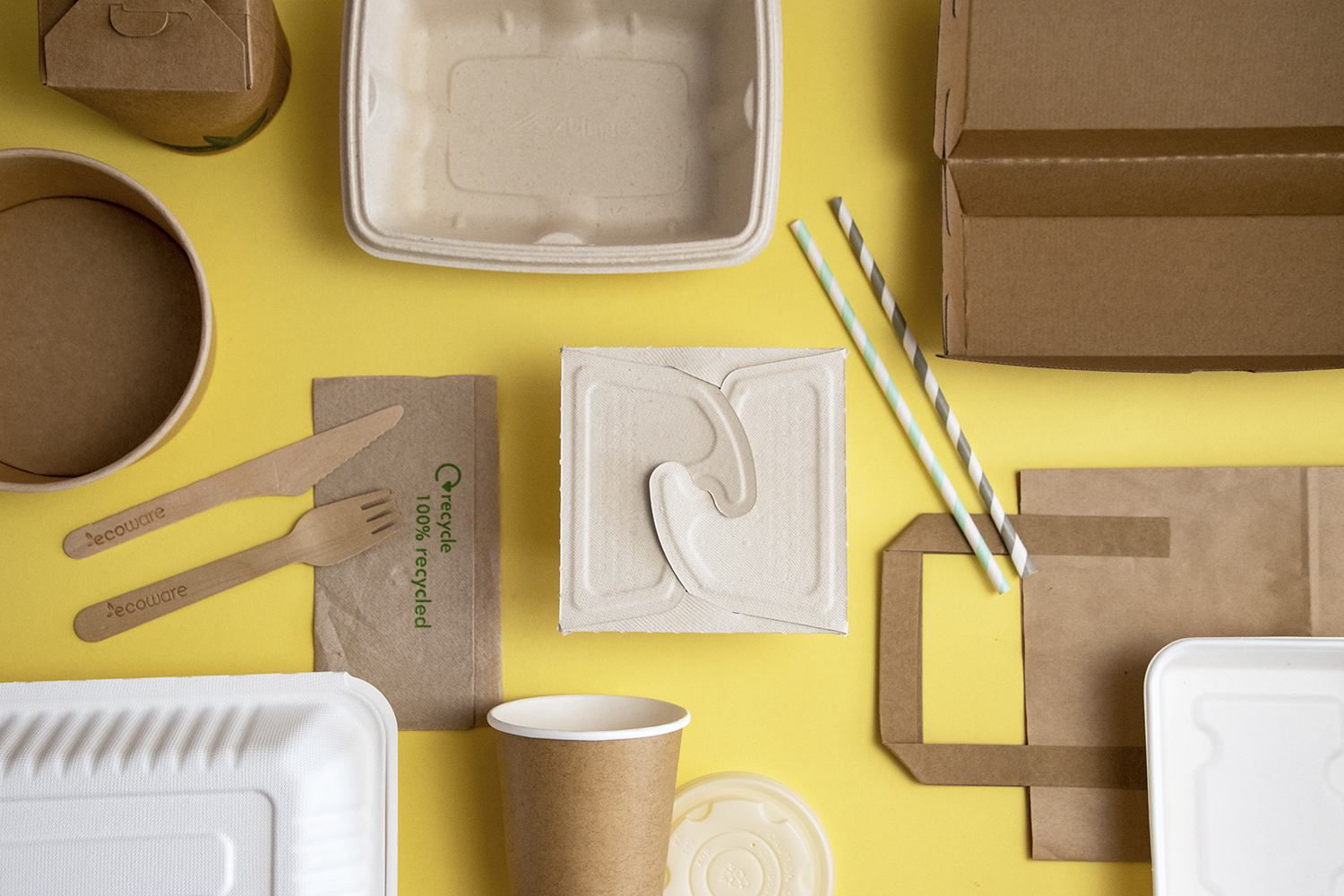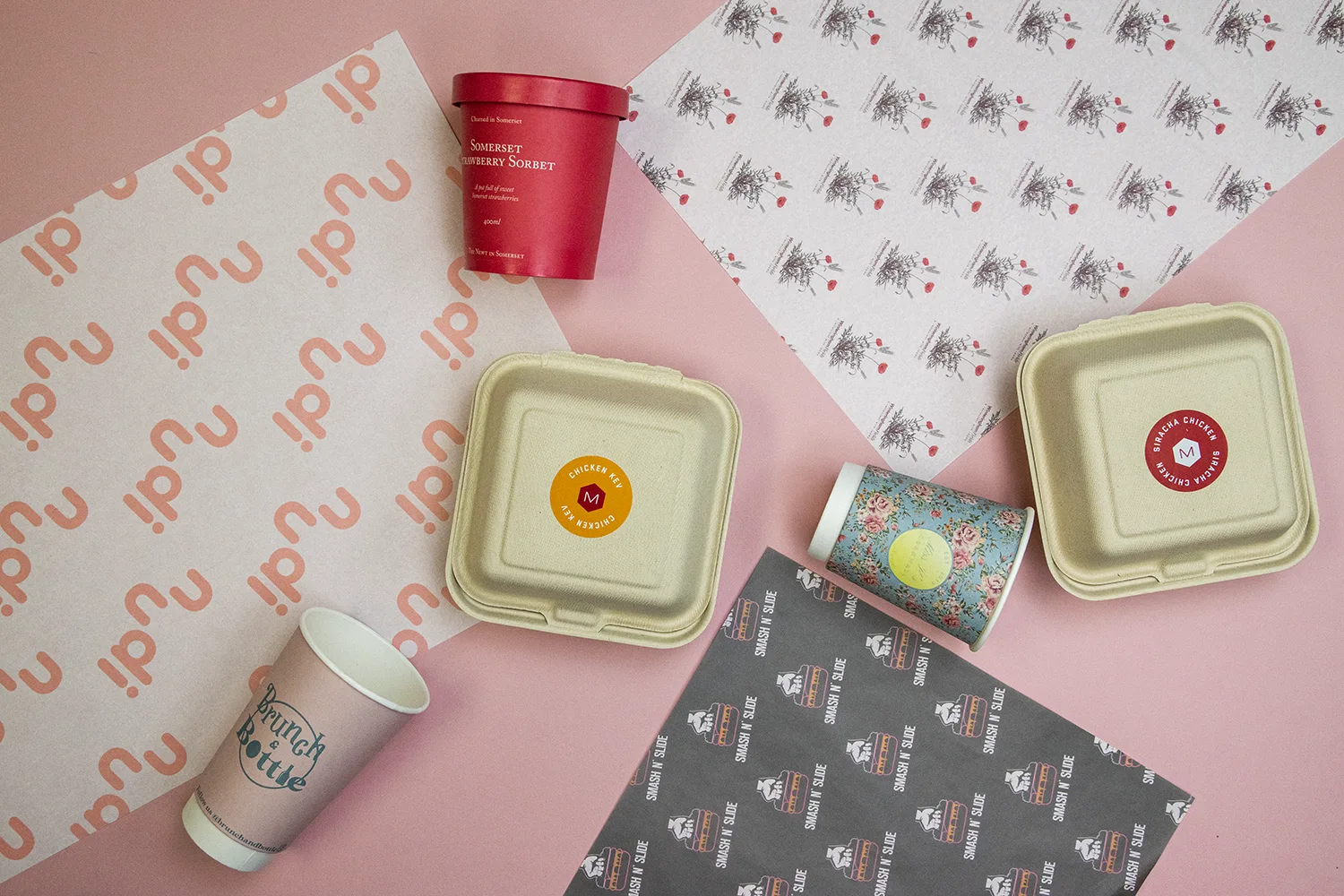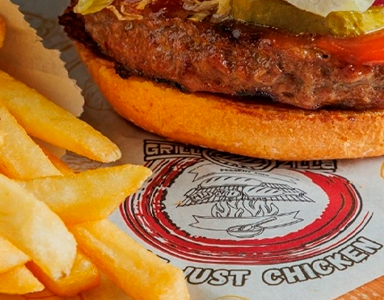Despite our frequent use of harmful oil-based plastics to ship and receive goods, there are plenty of alternatives on the market.
As an environmentally friendly packaging provider, we see it as our responsibility to spread the word about compostable packaging materials, recyclable packaging and how easily they can be sourced when you know where to look.
Particularly in the food industry, we are seeing coffee shop owners, street vendors and chain restaurants alike beginning to ask the question, “what are some alternatives to plastic?” This desire to seek materials capable of replacing plastic is largely due to a heightened awareness of the negative impact of plastic consumption on the environment. As a more informed nation, we are beginning to make choices that aren’t based solely on profit — they factor in the planet too.
Innovations in food packaging emerging in the food and drink sector should be celebrated. With Brits consuming 22 million takeaway meals each week — a number that keeps accelerating as consumers favour convenience and informal dining options — the pressure is on to reduce the environmental footprint of fast food. Since some regulated sectors can’t navigate towards sustainable alternatives as quickly as service sectors can — the health sector is a prime example — it’s down to the food and drink sector to pull the plug on plastics.
Among those innovations lie our own products, which use four key alternative packaging materials. These are:
- Unbleached Kraft Board
- Ingeo™ Bioplastic PLA
- Sustainable Birchwood
- Paper
In this blog post, we’ll discuss the uses of each material, how these materials are sourced and their credentials when it comes to waste.
Unbleached Kraft Board
A sustainable material found in many of our food containers and coffee cup sleeves, unbleached Kraft board is a non-plastic alternative to plastic containers in restaurants and a durable material that can house both hot and cold foods.
It’s important that we find plastic alternatives for common uses — like restaurant takeout boxes — so that we can cut down plastic consumption by the bucket load. Kraft board does this well by acting as a solid container structure. Its natural aesthetic is akin to containers found in Instagram food snaps, while the smooth surface is perfect for imprinting logos using veggie-based inks.
How Is Kraft Board Sourced?
Kraft board is sourced from responsibly managed and sustainable forests. The material is essentially made from wood pulp, and its unique manufacturing process makes the substance durable and tear-resistant, which are great characteristics for food containers and hot drink accessories.
What Waste Credentials Does Kraft Board Have?
Kraft board has the golden seal of approval when it comes to waste. Our Kraft board products are both recyclable and compostable, making them even more environmentally friendly.
Ingeo™ Bioplastic PLA
If you’re not so clued up on plastic pollution and our reliance on plastic, we’ve crafted a helpful blog post on the good and bad points of plastic. In that post, we conclude that some plastics are “just fine”, including Ingeo™ Bioplastic PLA, which is used in a range of our products.
In stark comparison to oil-based plastic products that are widespread in the food and drink sector, bioplastics naturally occur in plants and pose a lesser threat to the environment. We use bioplastics as they replicate the characteristics of regular plastic, including durability, transparency and flexibility.
Bioplastic’s desirable traits are used to create compostable cutlery, biodegradable straws that bend and transparent cups — both in appearance and environmental impact.
How Is Ingeo™ Bioplastic PLA sourced?
Known as a form of eco-friendly plastic packaging, Ingeo™ Bioplastic PLA is sourced from naturally occurring plants. This material has a carbon footprint that’s up to 80% lower than standard oil-based plastic packaging.
We’re proud providers of bioplastic, and on the products in our range where there is enough room to promote it, we do. The slogan “made from plants, not oil” adorns the larger products in this range as a way to communicate your commitment to eco-friendly alternatives to your customers. In fact, Ingeo™ Bioplastic PLA is so good that without a disclaimer, it can easily be mistaken for the real deal.
What Waste Credentials Does Ingeo™ Bioplastic PLA have?
Ingeo™ Bioplastic PLA is a commercially compostable material that acts as the next best alternative to oil-based plastics. Even if bioplastic products end up in a landfill, they will still prove less harmful than traditional plastic packaging.
Sustainable Birchwood
Solutions to plastic packaging can be big or small. While Kraft board acts as an alternative to food containers, sustainable Birchwood takes care of our dining accessories.
This material is found in our cutlery range and hot drink stirrers. Just as Kraft board offers a bold biodegradable look, these sustainable Birchwood products scream sustainability and moralistic dining. While bioplastics provide transparency to customers by allowing them to view a cup’s contents, non-plastic food packaging communicates its own transparent message about conscious consumption.
How Is Sustainable Birchwood Sourced?
Birchwood is a renewable and sustainable resource that is copious in global supply. As a raw material, it is suitable for several uses, including cutlery, with its little jagged edges and strong and durable qualities.
What Waste Credentials Does Sustainable Birchwood Have?
Birchwood is rustic in style and can instantly add an authentic vibe to your overall brand. While its traditional look can spruce up your servings, it’s also forward-thinking — sustainable birchwood is fully recyclable.
Paper
Out of the entire list, paper is perhaps the most obvious alternative packaging material. As a simple plastic substitute, paper is used for basic products.
In our portfolio, paper is used to create eco-friendly straws and is the primary component of our coffee cups. However, paper, when used as an alternative to plastic cups, must be lined with Ingeo™ Bioplastic PLA to ensure it is suitable for hot drink use.
How Is Paper Sourced?
Much like Kraft board, our paper is sourced from sustainable and responsibly managed forests. As a popular alternative to plastic packaging, there are plenty of comprehensive guides on the use of paper as a sustainable product.
What Waste Credentials Does Paper Have?
It’s simple — paper can be recycled, and is biodegradable and compostable. Supplying customers with paper-based items is a no brainer — especially when they can be expertly designed via our custom branding service.
Maximising Food Packaging Alternatives
Sustainable food packaging companies are actively promoting, educating and supplying companies with packaging alternatives. At Takeaway Packaging, we want to take this a step further.
Not only do we want to encourage 100% of our customer base to switch to future-friendly alternatives by 2021, but we also want to emphasise the importance of quality and design.
Eco-friendly alternatives can still deliver a memorable unboxing experience — this isn’t solely reserved for fancy but unnecessary plastics — through our expert design service. We create designer packaging that amplifies your brand message and differentiates your company from the rest. Continuing our commitment to sustainability, we implement ethical methods, like the use of veggie-based inks to add your brand logo to your packaging.
Take a look at some of our case studies to discover why we’ve been selected by a range of businesses, from niche companies like local farm shops to big brands — including Ferrari.
In a world where we are becoming increasingly concerned about sustainability, it’s important to remember to champion superior style, service and substance. Request a free consultation with our design team today to bring your brand to life.


